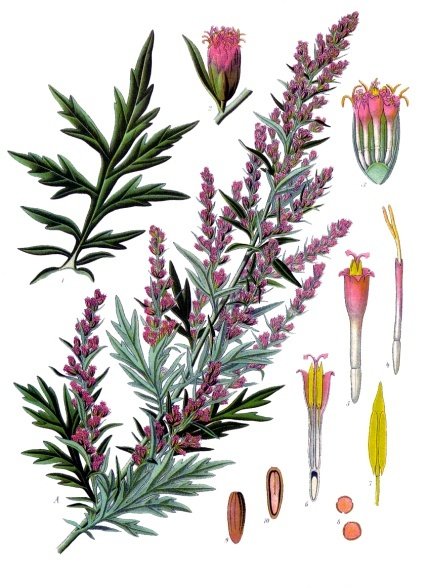| From Here |
Some spiritual cleansing tools that I will be mentioning have been used in some format since antiquity. Their effectiveness has long been highly regarded and are accessible across a wide variety of spiritual traditions. Others are rooted in the modern era.
Fresh, flowing water has long been known to be good for cleaning of all sorts. When the water is acquired from a source that is relatively free of human interference, it proves more effective for magical workings. Failing this, clean water is always preferable to muddied waters for obvious reasons. Flowing water is magically attuned to washing away things. Ocean water is good for spiritual cleansing as well. When one does not have access to ocean water, it is useful to replace it with clean water that has had salt added to it until it is approximately as salty as blood. Ocean water and salt water have similar properties. They retain the association with washing things away and also have mildly antiseptic properties due to the salt in them.
Salt has been honored for its magical and culinary properties since antiquity. In the European magical systems, salt is strongly associated with the Earth and physical forms. Salt is a desiccant, meaning it will draw water out of the environment to bond with it. This property is useful in the physical realm for preservation of food items and in the magical realm for drawing excess energy out of a system and returning it to the Earth. While other stones have this property as well, salt has it much more so. Soil that is free of pollutants can be useful for grounding and purifying spiritual pollution. It will, however, leave a 'stain' on the soil for a period of time. The greater the amount of spiritual pollution sunk into an area of soil, the longer it will remain.
Fire and smoke have been used as purification tools. Fire is known to consume that which is placed within it and transform it into something different. It is a magical catalyst for transformation as it is a physical example of transformation and operates on the basis of imitative magic [1]. Ancient societies, such as the Celts, would use the fumigation uses of smoke and the heat of the fire to drive away pests from their livestock by driving it between two large bonfires. The fumigation of that which is spiritually polluted with smoke is the concept behind practices akin to the Native American act of smudging.
 |
| From Here |
Herbs, resins, and spices can also be used in other methods for purification purposes. They can be processed into tinctures or similar liquids that are used to asperge or wash that which is being cleansed. They can be added to a ritual bath or into soaps for personal spiritual cleansing. It is also possible to use herbs, resins, and spices in food stuffs or beverages that work to help enhance one's spiritual cleansing. Many of the herbs that are reputed to be effective in this method of preparation have effects on the body to increase one's urine output, sweating, or voiding of the bowels. These three things are methods by which the human body expels that which is unhealthful. Some herbs that are used in purification also induce emesis.
Great care should be taken in ingesting herbs, as many of the herbs traditionally associated with purification are not necessarily safe to consume, despite the notation from antiquity that suggests their consumption is helathful. Physical efforts of purification of the body may include the practice of fasting. Absolute fasting should not be undertaken by persons whose health is compromised, small children, or women who are pregnant, unless under a doctor's supervision. Limited fasting, however, can be useful for purification purposes, as long as it is observed in a healthful fashion. Fasting practices may include abstaining from activities, such as sexual intercourse, for the period of time that the fast is engaged in.
The object of fasting or consuming purifying food or beverages is to cleanse ones body and spirit from the inside out. More will be mentioned of this in the next posts. As suggested above, ritual actions can be used to purify oneself of spiritual pollution. The observance of taboos, carrying of charmed items, or repetition of an appropriate prayer are all actions that work to expel and prevent spiritual pollution for the persons engaged in said actions. Ritual actions can also be used to purify a place or an item. These ritual actions, while similar to those for purification of one's person, are tailored to the situational needs and the level of urgency with which the spiritual pollution requires addressing. These will also be discussed in the next articles.
Forthcoming will be a list of herbs useful for purification and methods for their application. This discussion will also include when the use of said herbs is most opportune.
~*~*~*~*~*~*~*~*~
1. J.G. Frazer's The Golden Bough, Ch.3, Section 2
No comments:
Post a Comment